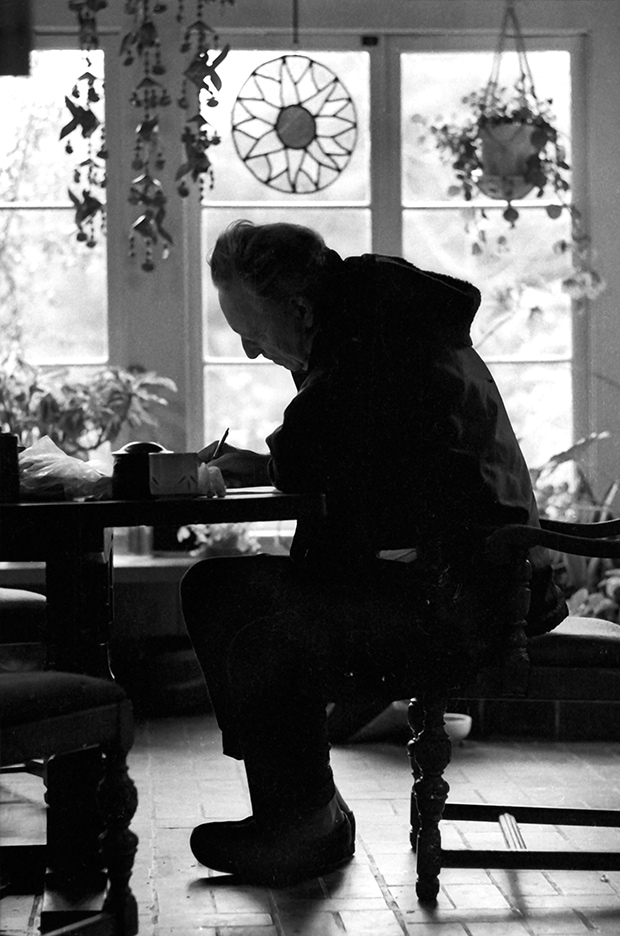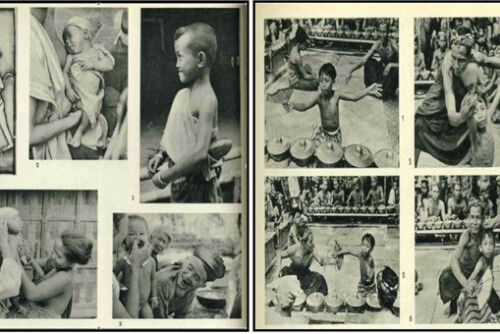This platform/paper is a multimedia bibliographic essay with an argument: working out in a posthumanities multiverse of articulating disciplines, interdisciplines, and multidisciplinarities requires a feminist practice of transdisciplinary inspection. Such inspection actually allows us to enjoy these many flavors of details, offerings, passions, languages, and things encountered while traveling the bibliographic among knowledge worlds, even as it simultaneously demonstrates that forms of transdisciplinary validity are not entailed only within their perhaps elegant but divergent parsimonies of explanation.
One index for the evaluation of such feminist transdisciplinary practice is how well it learns and models how to be affected or moved; how well it opens up unexpected elements of one’s own embodiments in lively and re-sensitizing worlds. Another index for valuing this practice lies in its possibilities for immersive play among sensations and platforms amid media ecologies; ways of participating in multispecies learning or self-organization across ecologies, mattering without owning the action.
Tools we need for such inspections and play include what Susan Leigh Star called “boundary objects” and what Chela Sandoval calls “differential consciousness.” Risks include the confusions of transcontextual double binds in a restructuring global academy. How do we befriend transdisciplinarity in the midst of global academic restructuring? How do we participate in shaping its knowledge projects and affections?
Contents:
- Bateson. Salen. Zimmerman: Double Bind Immersions, Play, and Crisis
- Haraway. Star: Relays and Boundary Objects
- Despret. Latour: Learning to be Affected
- Keeling. Ferguson: Affective Labor and Surplus Populations
- Barad. Ahmed. Alaimo. Hekman: Entangled Material Feminisms
- Jenkins. Sandoval: Transmedia Activisms
Bateson. Salen. Zimmerman: Double Bind Immersions, Play, and Crisis
From 1954 to 2004, from multidisciplinary anthropologist Gregory Bateson’s “A Theory of Play and Fantasy” to intellectual entrepreneurs Katie Salen’s and Eric Zimmerman’s Rules of Play: Game Design Fundamentals, transdisciplinary connections have been made on the basis of “play”—between psychiatry, mathematical logic, linguistics, histories and evolution of communication, ethology, biophysics, cybernetics, and natural history on the one hand, and game industry, fine arts design, education, semiotics, animation, new media, children’s television, and systems collaborations on the other. How does “play” come to associate all these knowledge worlds today as culture industries globally shift and alter; restructure and intermesh; and are recruited in nationalisms, economies, and political life? What sorts of politics might allow us to scope and scale among these, to “play” with our own consciousnesses, to understand how humans work as agents among agencies, in interactivities just on the edge of apprehension?
What does it take to be an intellectual actor across knowledge worlds as well as a trustworthy member of only some? How scary is it to practice knowledges beyond your control; to sift among forms of evidence requiring tools you do not have; to be required to rank, evaluate, and assess results of rules you have not played out, yet?
Learning, play, and games come to be our signs and practices for action among knowledge powers today, a semiotics of naturalcultural affections. Why?

Bateson is known for an idea that is very hard to evaluate: the notion of a “double bind.” Intended in the fifties as a clue to the meanings and causes of schizophrenia, cast retrospectively today it looks rather odd: what of the sexism of those laying blame on the “schizophrenogenic mother”? What of the possibility of gathering evidence for the effects of expressed emotion in family systems of those with possibly linked bipolar disorder? The risks, severity, effects, scope, intensity, and distribution of the communication tangles inspected through a concern with “double binds” may speak to various conditions of biosocial systems today.
According to Bateson double binds are transactions; that is to say, relational, social, and built upon repetition. More than a single or simple contradiction, they are instead an entire system of layered contradictions mobilized over a range of communication channels. At one level of meaning or abstraction and within a particular communication channel something is prohibited, punished—violations threaten or appear to threaten actual survival. But at another level and communicated via a different channel, something else is required, something impossible to effect if the prohibition is honored, yet not accomplishing it is also punishable and life-threatening. And topping it all off, not only is the situation inescapable and impossible to voice or talk about, it is so confusing that perceiving what is happening may be, at best, barely possible. Finally, all this happens over and over again, until such double-bind patternings become experienced as “reality.”
Bateson was also aware that double-bind effects might not be simply debilitating or pathological. Normal versions of double binds occur all the time. Religious practices, entertainment, game design, learning, and professional environments may also deal with some edge of double bind. And both sorts of double binds—these relatively common ones and those of much greater abusive effect—also create, in ranges of circumstances including the almost intolerable, conditions that may produce new creativities—if survived. Abusive practices and challenging ones are only too easily mistaken for each other when crucial context markers distinguishing one from another become unrecognizable, contradictory, or fraudulent. Thus terror and possibility are on edge in double bind experiences, as “transcontextual confusions” require “transcontextual gifts” one may or may not have. Bateson inspected such patternings as intense, that is, needing fine discriminations between kinds of messages for urgent appropriate response; contradictory, and this at two different orders of message, each of which denies the other; and finally, unvoiced, that is to say, making explicit checks of context impossible, inappropriate, or meaningless. 1
We are talking then about some sort of tangle in the rules for making the transforms and about the acquisition or cultivation of such tangles […] [T]here is nothing to determine whether a given individual shall become a clown, a poet, a schizophrenic, or some combination of these. We deal not with a single syndrome but with a genus of syndromes, most of which are not conventionally regarded as pathological. Let me coin the word “transcontextual” as a general term for this genus of syndromes. It seems that both those whose life is enriched by transcontextual gifts and those who are impoverished by transcontextual confusions are alike in one respect: for them there is always or often a “double take.” A falling leaf [or] the greeting of a friend … is not “just that and nothing more.” 2

Tangles and the transcontextual will now run as threads through the rest of this essay. These threads should always “play” with this range of terror and possibility amid the workings with and through consciousnesses, those individual and those biosocial. Consciousnesses here have elements of both reflection and recursion. At the edge of apprehension, they are those environments of being in which context, pattern, layers of abstraction, and storytelling all have material effects and provide materials for agency.
Double takes and double consciousness are at the heart of the theories of play and fantasy that Salen and Zimmerman find useful for game design and for new education projects. They challenge what they call “the immersive fallacy”—the idea that games get better and better as they become whatever that thing “more real” is. (Notice that this immersive fallacy has implications for whatever those things “rigor,” “representation,” “evidence,” “method,” and “assessment” mean too.) Bateson is their touchstone for “metacommunicative media”: “play is a process of metacommunication, a double-consciousness in which the player is well aware of the artificiality of the play situation.” 3
As animals and children learn to play they come to know that there are some ways a play self can and must be separated from an everyday self, and they learn to perform this separation in interactive cognitive and social communication forms of “not”: they amuse themselves by performing the communication “this is not it.” The puppy nips, but not hard enough to injure. (Violence? Not.) The teen kisses in spin the bottle, but not necessarily the person they like the most. (Sex? Not.) Yet at the same time there are also other ways in which these selves simply are not separated, in certain physiological processes and psychological equivalences. The nip actually hurts a bit, the kissing blush and stammer. A double consciousness of being in both these states at the same time is possible, as Bateson puts it in formal terms, because play creates its own commentary in itself about itself as an intense and pleasurable interactive dynamism—communicatively social, as well as neurological and hormonal. Such metacommunications—or communications about communication—are performed by embodied selves at multiple “levels” of organic and social systems, some sequentially, some simultaneously. 4
Notice that metacommunication and metacommunicative media are at stake in double binds: good signaling skills make nonabusive play on the edge of double binds possible: “My body is reacting as if I am in danger, but really I’m in front of a computer screen.” (Reality? Not.) But Bateson was well aware that not every edge of play is so easily resolved: that transcontextual confusions and gifts arise from situations in which “tangles” remain, in which finding out which bits are active; which bits are context; which bits can be made explicit; which rules are perceptible; and which distributed embodiments, cognitions, and infrastructures are in play, matters. And the skills for all this, transcontextual movement without falling apart, what restructuring academies, nations, and industries call “innovation,” are the very heart of all those things that the word “gaming” now covers, from gambling to economic game theory, from game art and design to games as learning, from role playing to systems theory—many of these playing with our distributed being, individual and collective, neurological and hormonal, industrial and creative. This is the context for considering all the other bibliographic entries of this essay.
- Gregory Bateson, Steps to an Ecology of Mind: Collected Essays in Anthropology, Psychiatry, Evolution, and Epistemology (San Francisco: Chandler, 1972).[↑]
- Bateson 1972: 272.[↑]
- Katie Salen and Eric Zimmerman, Rules of Play: Game Design Fundamentals (Cambridge: MIT Press, 2003) 451.[↑]
- Bateson 1972; Gregory Bateson, Men are Grass: Metaphor and the World of Mental Process (West Stockbridge: Lindisfarne Press, 1980).[↑]




